 |
|
|

Статья: Rome Reborn in Google Earth
Авторы : Wells, S., Frischer, B., Keller, C.
Wells, S., Frischer, B., et al., 2010. "Rome Reborn in Google Earth," in CAA 2009. Making History Interactive. 37th Proceedings of the CAA Conference March 22-26, 2009, Williamsburg, Virginia (Archaeopress: Oxford, 2010) 373-379. [Электронный ресурс]. Систем. требования: Adobe Acrobat Reader. - URL: http://www.romereborn.virginia.edu/rome_reborn_2_documents/papers/Wells2_Frischer_Rome_Reborn.pdf (дата обращения: 10.02.2011).
Index Terms —Virtual Historical Reconstruction, Cultural Heritage, Ancient Rome, Google Earth, 3D, historic archaeological models
Аннотация:
This paper discusses the development process in building the “Ancient Rome 3D” layer in Google Earth in 2008. The layer contains a 3D model of Rome in A.D. 320, showing more than 7,000 buildings. More than 200 of the better-known buildings and features are marked with information balloons, which have links to external HTML pages that contain descriptions of the objects and a heterogeneous set of on-line resources related to each building or feature. The process was a collaboration between Google Earth software engineers and the University of Virginia.
This work took approximately seven months of effort by people on our team and at Google Earth. Technical problems forced us to abandon some key aspects in the design and to deliver the placemarks, terrain, and model in separate steps. With hindsight, we might have been able to execute a simpler and easier approach to the model, which would have allowed us to hold on to the intended interface. And, were we to attempt something on this scale again, we would certainly take a different approach. Sketch-Up is a wonderful tool, but it is not designed to handle complex large models. Indeed, we would advise any project that might consider publishing a large 3D model of a cultural heritage site to make sure that there is an efficient and practical path for 3D data either to migrate to KML or to be built from scratch. It is also important to take the time to consider how the historic terrain may have changed and how that might best be communicated to users. In spite of the assorted pitfalls outlined in this paper, we are excited by the opportunities that Google Earth offers to cultural heritage research and education. Google Earth is a wonderful tool and an excellent venue for publishing 3D models. In some cases, the best and easiest route will be for the scholar to create his or her own KML files and to publish them on a web site. This allows individual control over the distribution and much more flexibility and precision in the use of the data. In contrast, a project on the scale of Rome Reborn required the active help, cooperation, and (last but not least!) the server resources of Google Earth
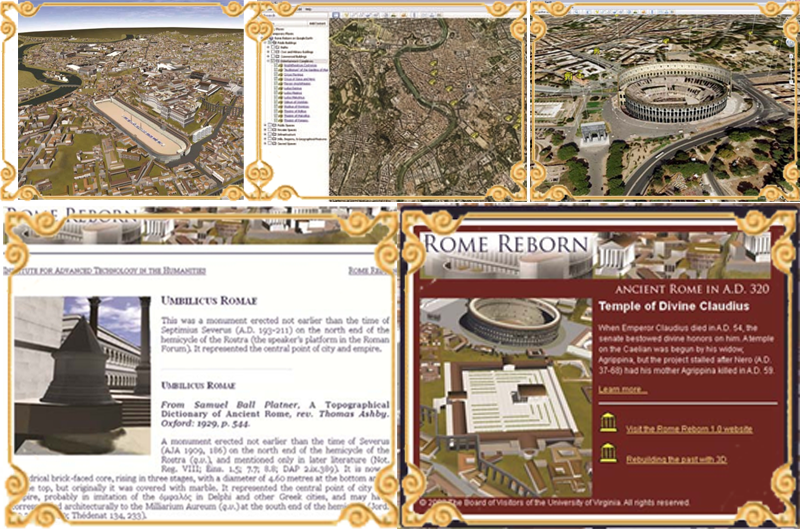
Статья: Rome Reborn 2.0: A Case Study of Virtual City Reconstruction Using Procedural Modeling Techniques
Авторы : Kimberly, D., Frischer, B., Mueller, P., Ulmer, A., Haegle, S.
Kimberly, D., Frischer, B. et al., 2010. "Rome Reborn 2.0: A Case Study of Virtual City Reconstruction Using Procedural Modeling Techniques," in CAA 2009. Making History Interactive. 37th Proceedings of the CAA Conference March 22-26, 2009, Williamsburg, Virginia (Archaeopress: Oxford, 2010) 62-66. [Электронный ресурс]. Систем. требования: Adobe Acrobat Reader. - URL: http://www.romereborn.virginia.edu/rome_reborn_2_documents/papers/Dylla2_Frischer_Rome_Reborn.pdf (дата обращения: 10.02.2011).
Index Terms — Virtual Historical Reconstruction, Cultural Heritage, Ancient Rome, procedural modeling, parametric modeling, 3D modeling, ancient Rome
Аннотация:
Rome Reborn is a virtual reconstruction of the entire city of ancient Rome at the height of its urban development in 320 AD. The model consists of two kinds of digital reconstructions: Class I elements (whose position, identification, and design are known with great accuracy); and Class II elements (whose building type and location are known only in a general way). Within the Aurelian walls, there are more than 7000 buildings. Of these, ca. 250 fall into Class I, and the rest into Class II. By their very nature, Class I elements can be digitally modeled with a high level of detail and confidence; Class II elements cannot. The challenge in modeling an entire city such as ancient Rome (and, by extension, many other sites known from incomplete archaeological data) is to harmonize the mode of representation of these two classes of buildings. This paper describes how we utilized procedural and parametric modeling techniques to create visually compelling and detailed models of the Class II elements of the digital model of ancient Rome. Procedural modeling methods made the modeling process very efficient without sacrificing detail or quality. Furthermore, the flexibility of the approach helps to quickly change and regenerate the model as new scholarship or discoveries warrant.

Статья: The Rome Reborn Project. How Technology is helping us to study history
Авторы : Frischer, B.
Frischer, B., The Rome Reborn Project. How Technology is helping us to study history, OpEd, November 10, 2008. University of Virginia. [Электронный ресурс]. Систем. требования: Adobe Acrobat Reader. - URL: http://www.romereborn.virginia.edu/rome_reborn_2_documents/papers/Frischer_OpEd_final2.pdf (дата обращения: 10.02.2011).
Index Terms — Virtual Historical Reconstruction, Cultural Heritage, Ancient Rome
Аннотация:
Visualization is just starting to come to History and the humanities. Now that Google Earth has decided to include Rome Reborn as a layer that all its 400 million subscribers will be able to access, I can safely predict that visualization is here to stay and is about to take off in terms of quality and quantity. It makes little sense for ancient Rome to be the only ancient site offered in Google Earth. A precedent has been set and, I hope and imagine, a demand for more such models kindled. Google Earth offers an ideal platform on which we can publish such work, be it of Giza in Old Kingdom Egypt, Athens in the Age of Pericles, or Monte Alban at the height of Zapotec culture. Google Earth is freely available, has a vast installed user base, and supports not only the 3D model but also related scholarly documentation through an information bubble that is attached exactly to the spot in a model where elucidation or explanation is needed. We digital humanists are eager to provide models, and our students increasingly expect and demand them. Let me conclude by expressing the hope that Google Earth will provide the wherewithal to fulfill the digital dreams of students and scholars alike.
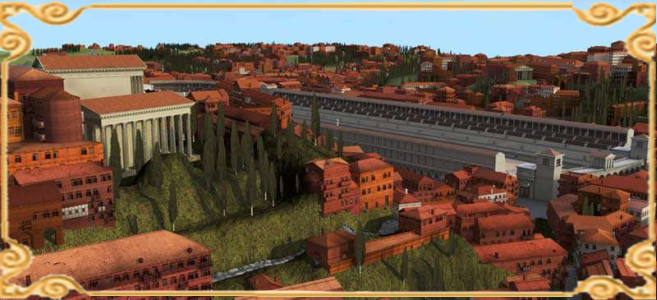
Статья: The Importance of Scientific Authentication and a Formal Visual Language in Virtual Models of Archaeological Sites: The Case of the House of Augustus and Villa of the Mysteries
Авторы: Frischer, B. and Stinson, P.
Frischer, B. and Stinson,P. The Importance of Scientific Authentication and a Formal Visual Language in Virtual Models of Archaeological Sites: The Case of the House of Augustus and Villa of the Mysteries // in Interpreting The Past: Heritage, New Technologies and Local Development. Proceedings of the Conference on Authenticity, Intellectual Integrity and Sustainable Development of the Public Presentation of Archaeological and Historical Sites and Landscapes, Ghent, East-Flanders, 11-13 September 2002. Flemish Heritage Institute, Ename Center for Public Archaeology and Heritage Presentation. 2007, Brussels, Belgiumn [Электронный ресурс]. Систем. требования: Adobe Acrobat Reader. - URL: http://www.romereborn.virginia.edu/rome_reborn_2_documents/papers/Frischer_Stinson.pdf (дата обращения: 10.02.2011).
Index Terms —Virtual Historical Reconstruction, Cultural Heritage, Ancient Rome
Аннотация:
In this paper we will discuss, from the point of view of practitioners of CVR, the general problem of the application of virtual reality technology to the presentation of cultural heritage sites, with special reference to the articles of the draft Ename Charter that mention or relate to virtual reality. (For the original text of the Ename Charter and its subsequent versions see p. 227) The pertinent articles, as distributed in a text at the Ghent Conference in September 2002, are the following:
Article 9. In cases where the structural stability of a monument is not in danger, nonintrusive visual reconstructions (by means of artists’ reconstructions, 3D computer modeling, Virtual Reality) should be preferred to physical reconstruction.
Article 18. The construction of 3D computer reconstructions and Virtual Reality environments should be based upon a detailed and systematic analysis of the remains, not only from archaeological and historical standpoints but also from close analysis of the building materials, structural engineering criteria and architectural aspects. Together with written sources and iconography, several hypotheses should be checked against the results and data, and 3D models ‘iterated’ towards the most probable reconstruction.
Article 20. Full scientific documentation of all elements in a presentation programme should be compiled and made available to visitors as well as researchers. This documentation should be in the form of an analytical and critical report, in which the archaeological or historical basis for every element of the work of presentation is included. This record of documentation should be placed in the archives of a public institution and should be published or posted on the Internet. We begin by stating that, as practitioners of the art, we welcome the recognition accorded to virtual reality in the draft Ename Charter. We recognize the fact that the text of the Charter is simply a first draft and that suggestions for improvements have been invited by the authors. Thus, if we are critical of the draft Charter, it is solely with the aim of helping to craft the best possible final version of the text. Below, we will first provide some commentary on the draft Charter and discussion of some theoretical matters; and then we will examine two projects of the Cultural Virtual Reality Laboratory that can serve as case studies of the general issues raised by the application of virtual reality technology to site presentation; and, finally, we will conclude with some thoughts about the implications of this study for the Ename Charter.
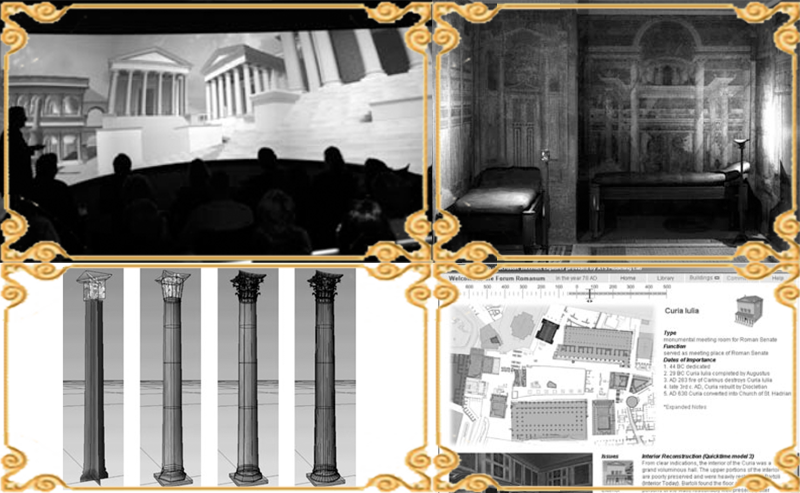
Статья: New Directions for Cultural Virtual Reality: A Global Strategy for Archiving, Serving, and Exhibiting 3D Computer Models of Cultural Heritage Sites
Авторы: Frischer, B.
Frischer, B., 2006. "New Directions for Cultural Virtual Reality: A Global Strategy for Archiving, Serving, and Exhibiting 3D Computer Models of Cultural Heritage Sites," in Proceedings of the Conference, Virtual Retrospect 2005 (Bordeaux), 168-175. [Электронный ресурс]. Систем. требования: Adobe Acrobat Reader. - URL: http://www.romereborn.virginia.edu/rome_reborn_2_documents/papers/VR_Frischer2005.pdf (дата обращения: 10.02.2011).
Index Terms — Virtual heritage; digital preservation; campanilismo; World Virtual Heritage Center; Immaginare Roma World Expo; Archeovision, SAVE.
Аннотация:
In the past decade, the application of 3D computer technology to cultural heritage has been widely accepted by archaeologists, architectural historians, and cultural authorities. This paper argues that the field of virtual heritage now faces two challenges: campanilismo, or the privileging of local heritage over global heritage; and the lack of preservation. A solution is proposed for both problems: creation of a world virtual heritage center and network with the missions of collecting, maintaining, and distributing computer models of cultural heritage sites; and of organizing exhibitions of virtual heritage on global themes.

Статья: Virtualizing Ancient Rome: 3D Acquisition and Modeling of a Large Plaster-of-Paris Model of Imperial Rome
Авторы: Guidi, G., Frischer, B., et al.
Guidi, G., Frischer, B. et al., 2005. Virtualizing Ancient Rome: 3D Acquisition and Modeling of a Large Plaster-of-Paris Model of Imperial Rome, Videometrics VIII, edited by J.-Angelo Beraldin, Sabry F. El-Hakim, Armin Gruen, James S. Walton, 18-20 January 2005, San Jose, California, USA, SPIE, vol. 5665, 119-133.[Электронный ресурс]. Систем. требования: Adobe Acrobat Reader. - URL: http://www.romereborn.virginia.edu/rome_reborn_2_documents/papers/Plastico.pdf (дата обращения: 10.02.2011).
Index Terms — Laser Radar, digitalization of physical models, 3D laser scan, Range map alignment, Meshing, Accuracy, Precision, Virtual Archaeology, Rome Reborn
Аннотация:
Computer modeling through digital range images has been used for many applications, including 3D modeling of objects belonging to our cultural heritage. The scales involved range from small objects (e.g. pottery), to middle-sized works of art (statues, architectural decorations), up to very large structures (architectural and archaeological monuments). For any of these applications, suitable sensors and methodologies have been explored by different authors. The object to be modeled within this project is the “Plastico di Roma antica,” a large plaster-of-Paris model of imperial Rome (16x17 meters) created in the last century. Its overall size therefore demands an acquisition approach typical of large structures, but it also is characterized extremely tiny details typical of small objects (houses are a few centimeters high; their doors, windows, etc. are smaller than 1 centimeter). This paper gives an account of the procedures followed for solving this “contradiction” and describes how a huge 3D model was acquired and generated by using a special metrology Laser Radar. The procedures for reorienting in a single reference system the huge point clouds obtained after each acquisition phase, thanks to the measurement of fixed redundant references, are described. The data set was split in smaller sub-areas 2 x 2 meters each for purposes of mesh editing. This subdivision was necessary owing to the huge number of points in each individual scan (50-60 millions). The final merge of the edited parts made it possible to create a single mesh. All these processes were made with software specifically designed for this project since no commercial package could be found that was suitable for managing such a large number of points. Preliminary models are presented. Finally, the significance of the project is discussed in terms of the overall project known as “Rome Reborn,” of which the present acquisition is an important component.

Статья: In the eyes of the beholder: Virtual Reality re-creations and academia
Авторы: Favro, D.
Favro, D. In the eyes of the beholder: virtual reality re-creations and academia // Journal of Roman Archaeology Supplementary Series Number 61(2006), 321-334. [Электронный ресурс]. Систем. требования: Adobe Acrobat Reader. - URL: http://www.etc.ucla.edu/research/documents/Favro-IntheEyesoftheBeholder-VirtualRealityRe-creationsandAcademiainImagingAncientRome.pdf (дата обращения: 10.02.2011).
Index Terms — Virtual Historical Reconstruction, Cultural Heritage, Ancient Rome
Аннотация:
I begin with a disclaimer. As an architectural historian situated in an American graduate school of Architecture, my perspective is different from that of classicists, art-historians or archaeologists, though I have learned much from scholars in those disciplines. In particular, I am preoccupied with how historic cities were viewed, experienced, imagined, and held in memory.1 When B. Frischer and I opened the University of California at Los Angeles (ULCA) Cultural VR Laboratory (henceforth CVRLab),2 we agreed upon two main goals. The first is to ensure the models are created scientifically and are architecturally accurate.3 The second goal is to contextualize individual structures in broader urban and geographical settings. Thus, the individual buildings are sited in the overall environment of the Forum Romanum model and surrounding urban areas. Within a few months the CVRLab's models will be situated within a digital scan of Gismondi's expansive plaster model of Constantinian Rome to present a comprehensive urban environment. As described below by B. Frischer, the Virtual Reality models allow observers to move through the digital environments in real time. Such holistic and immersive urban simulations refocus attention on both urban space and on the observers' kinetic movement through the re-created environments. The models can be shown on desk- and laptop computers, though a more impressive experience occurs in immersive theaters such as the UCLA Visualization Portal with its triple projection and 22-foot screen.

Статья: The Digital Roman Forum Project of the UCLA Cultural Virtual Reality Laboratory.
Авторы: Frischer, B., Favro, D., Dean L. Abernathy, and Monica De Simone..
Frischer, B., Favro, D., Dean L. Abernathy, and Monica De Simone. The Digital Roman Forum Project of the UCLA Cultural Virtual Reality Laboratory. The International Archives of the Photogrammetry, Remote Sensing and Spatial Information Sciences, forthcoming. [Электронный ресурс]. Систем. требования: Adobe Acrobat Reader. - URL: http://www.cvrlab.org/research/images/FrischerEtAlRomanForum.pdf (дата обращения: 10.02.2011).
Index Terms —3D modelling; urban simulation; knowledge representation; Roman Forum.
Аннотация:
From 1997 to 2002 the UCLA Cultural Virtual Reality Laboratory created a digital model of the Roman Forum. The model contains the 22 major elements of the Forum. In this paper the project is described, its rationale is given, and the modelling methodology and technology are explained.
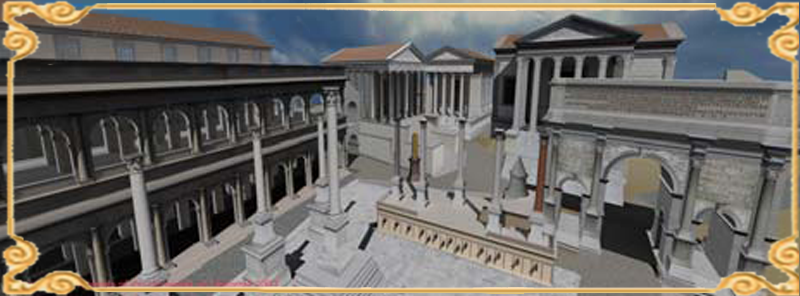
Статья: Virtual Reality and Ancient Rome: The UCLA Cultural VR Lab's Santa Maria Maggiore Project
Авторы: Frischer, B. et al.
Frischer, B. et al. 2000. Virtual Reality and Ancient Rome: The UCLA Cultural VR Lab's Santa Maria Maggiore Project, by B. Frischer, D. Favro, P. Liverani, S. De Blaauw, D. Favro, D. Abernathy, Virtual Reality in Archaeology, British Archaeological Reports International Series S 843, ed. J. A. Barcelo, M. Forte, and D. H. Sanders (ArcheoPress, Oxford) 155-162. [Электронный ресурс]. Систем. требования: Adobe Acrobat Reader. - URL: http://www.cvrlab.org/research/images/SantaMariaPrrojAdobe.pdf (дата обращения: 10.02.2011).
Index Terms — Virtual Historical Reconstruction, Cultural Heritage, Ancient Rome
Аннотация:
Since the fall of 1995, professors of Classics, Architecture, Education, and Information Science at UCLA, in conjunction with colleagues in the United States, Britain, and Italy, have been developing virtual reality (VR) models of buildings and monuments in ancient Rome (cf. fig. 1). This collaborative research effort is called the Rome Reborn Project in honor of the first systematic study of Roman topography, Flavio Biondo's mid-fifteenth century Roma Instaurata (de Grummond 1996: 160-61). Since January, 1998 the project has been housed in the UCLA Cultural VR Lab, which was created with support from Intel, the Creative Kids Education Foundation, Mr. Kirk Mathews, the UCLA Division of Humanities, the UCLA Humanities Computing Facility, the UCLA Center for Digital Innovation, the UCLA Graduate Division, the UCLA Office of the Vice Chancellor for Research, and the UCLA College of Letters and Science.
The Lab's mission is to provide technology support for projects like Rome Reborn that strive to recreate authenticated three-dimensional computer models of sites of great historic and cultural interest around the world. The Lab was founded on the assumption that in the next few years it will be as usual for archaeologists to commission highly accurate 3D computer models of their sites as it is for them to order radiocarbon dating of their organic finds or other tests. Just as there are several laboratories commonly used for radiocarbon dating, it is logical to expect that there will be a handful of 3D modeling facilities known for providing this new kind of archaeological service. The UCLA Cultural VR Lab hopes to be one such service provider.

ПРЕЗЕНТАЦИЯ ПРОЕКТА В ПРЕССЕ И ТЕЛЕВИДЕНИИ:
![]() Открыть список публикаций в прессе
Открыть список публикаций в прессе
![]() Видеофрагмент 1. Виртуальная экскурсия по античному Риму
Видеофрагмент 1. Виртуальная экскурсия по античному Риму
![]() Видеофрагмент 2. Виртуальная экскурсия по античному Риму
Видеофрагмент 2. Виртуальная экскурсия по античному Риму
Статья: Problematique d’une restitution globale de la Rome antique. Une visite interactive avec acces dynamique aux sources anciennes
Авторы: Fleury, P., Madeleine, S.
Fleury, P., Madeleine, S. Problematique d’une restitution globale de la Rome antique. Une visite interactive avec acces dynamique aux sources anciennes [Электронный ресурс]. Систем. требования: Adobe Acrobat Reader. - URL: http://www.unicaen.fr/services/cireve/rome/pdf/article.pdf (дата обращения: 10.02.2011).
Index Terms — Ancient Rome, virtual reality, interactivity, Rome antique, Realite virtuelle, interactivite
Аннотация:
L’objectif de l’equipe est de realiser une maquette virtuelle entierement interactive de la Ville de Rome dans laquelle l’utilisateur pourra circuler librement a l’echelle 1 (en vue objective ou subjective), entrer a l’interieur des principaux monuments publics et visiter quelques habitations privees. La perspective est scientifique et pedagogique : il s’agit de creer pour les chercheurs un outil de documentation et d’experimentation, pouvant continuellement etre mis a jour, et pour le public un outil de visualisation d’une realite difficilement perceptible aujourd’hui. Les questions qui se posent autour d’un tel travail sont nombreuses : pourquoi restituer ? Quelle est la legitimite d’un modele virtuel ? Quelle est sa place parmi les autres objets scientifiques du domaine des sciences humaines et sociales ? A qui est-il destine ? En amont et en aval de ces questions se posent le probleme de l’analyse des sources et celui de la realite virtuelle. Nous allons essayer de montrer comment la solution que nous avons choisie (visite interactive scientifique avec acces dynamique aux sources anciennes) permet de repondre, au moins partiellement, aux questions posees.
Our team has been developing a fully interactive model of ancient Rome which allows a visitor to move freely in a full-scale city and enter the main public buildings as well as some private apartments. The aim is both scientific and didactic. Scholars can use the model as a regularly updated database for reference and possible experiments. The general public can visualize a world that was, now beyond their reach.The following issues may be raised: Why such a reconstruction? To what extent is a virtual model legitimate? Does it have its place as another scientific item in the field of soft science? Who is to be targeted?
Prior to, and in the wake of the above issues, another point is the approach to sources and handling of virtual reality. We shall show that our project, combining interactive scientific visit and active access to historical data, answers, at least partly, the questions raised.
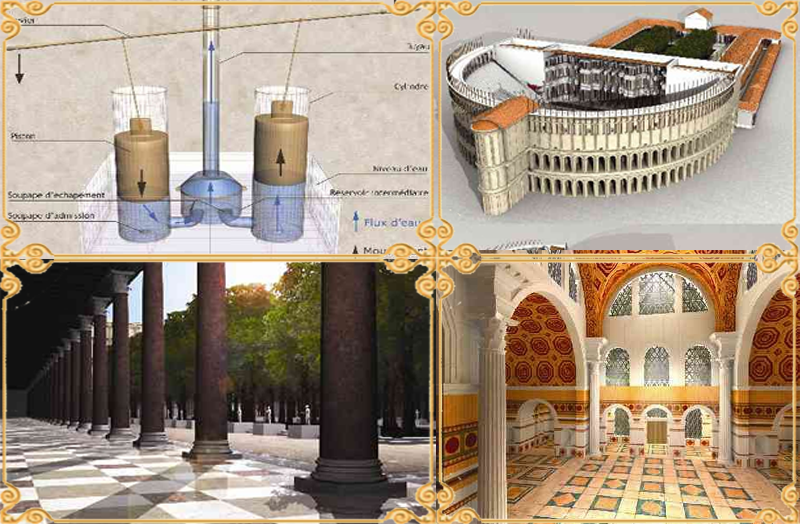
Статья: L’acces aux sources anciennes sur le modele virtuel de la Rome antique
Авторы: Fleury, P., Madeleine, S.
Fleury, P., Madeleine, S. L’acces aux sources anciennes sur le modele virtuel de la Rome antique [Электронный ресурс]. Систем. требования: Adobe Acrobat Reader. - URL: http://www.unicaen.fr/services/puc/ecrire/preprints/preprint0222009.pdf (дата обращения: 10.02.2011).
Index Terms — Ancient Rome, virtual reality, interactivity, Rome antique, Realite virtuelle, interactivite
Аннотация:
L’equipe « Plan de Rome » mene depuis 1994 un travail de restitution virtuelle de la Rome antique. Le point de depart de cette entreprise est la presence a Caen du plan relief de Paul Bigot, grande maquette en platre (11 m x 6 m) de la Rome de Constantin, communement appelee le « Plan de Rome ». L’objectif de l’equipe est de realiser une maquette virtuelle entierement interactive dans laquelle l’utilisateur pourra circuler librement. La perspective est scientifique et pedagogique : il s’agit de creer pour les chercheurs un outil a la fois de documentation et d’experimentation, pouvant continuellement etre mis a jour, et pour le public un outil de visualisation d’une realite difficilement perceptible aujourd’hui. L’ensemble des documentations synthetisees est accessible pour l’utilisateur du modele virtuel.

Статья: Виртуальная интерактивная реконструкция античного Рима IV в. н. э.
Авторы: Fleury, P., Madeleine, S.
Fleury, P., Madeleine, S. Виртуальная интерактивная реконструкция античного Рима IV в. н. э. Новый взгляд. Лаборатория Социальной истории ТГУ им. Г.Р. Державина. Международный сборник работ молодых историков. Тамбов. Издательство «Юлис». 2007. Стр 46-51. [Электронный ресурс]. Систем. требования: Adobe Acrobat Reader. - URL: http://hist.msu.ru/Departments/Inf/3D/Article/Sofi_Madlen_Rome_Reborn_Novyi_vzgljad_.pdf (дата обращения: 10.02.2011).
Index Terms — Ancient Rome, virtual reality, interactivity, Rome antique, Realite virtuelle, interactivite, Античный Рим, виртуальная историческая реконструкция.
Аннотация:
Получив свое развитие в последнем десятилетии XX в., виртуальная реальность в начале XXI в. проникает в ткань исследования. Обладая одновременно научным и техническим аспектами, она базируется на двух фундаментальных концептах цифровой модели — погружения и интерактивности. По латыни «Restituere» означает «восстанавливать; приводить в исправность, в порядок». Среди многочисленных попыток реконструкции Рима Цезарей — акварели, рисунки и макеты . План Рима — одна из таких попыток. Это гипсовый макет в масштабе 1:400, представляющий три пятых части Рима эпохи Константина I (начало IVв. н. э.) Архитектор Поль Биго создал этот макет в начале XX в. и в последствии
завещал его своему ученику Анри Бернару. А. Бернар отстроил здание университета Нижней Нормандии (г. Кан) после разрушений Второй мировой войны. Макет Рима А. Бернар передал в дар университету. Макет был установлен в построенном в 1995 г. здании Центра гуманитарных исследований при университете г. Кана.
Параллельно с музеефикацией макета стал развиваться проект виртуальной реконструкции античного Рима, осуществляемый сотрудниками Центра исследований Античности и мифов (CERLAM), а также при участии специалистов по информатике и архитектуре.
Применение технологии виртуальной реальности в реконструкции архитектуры или античных механических систем открывает новые перспективы в построении, репрезентации и использовании «модели». Вся документация (тексты, иконография, археологические данные) переводится в цифровой вид. При визуализации архитектуры учитывается
соответствие масштабу человека, предусматривается проникновение внутрь модели (в том числе в интерьеры зданий); различные гипотезы могут быть проверены в интерактивном режиме.

Книга: Reconstitution virtuelle de la Rome antique (Epuise)
Авторы: Lecocq, F., Davy Marie-Claire, Fleury, P. et.al.
Reconstitution virtuelle de la Rome antique (Epuise). Collection Les Cahiers de la M.R.S.H., numero 14 (1998), 120 pages, En vente aux Presses unversitaires de Caen a la M.R.S.H [Электронный ресурс]. Систем. требования: Adobe Acrobat Reader. - URL: http://www.unicaen.fr/services/cireve/rome/publications/pdf/cahier14.pdf (дата обращения: 10.02.2011).
Index Terms — Virtual Historical Reconstruction, Cultural Heritage, Ancient Rome
Аннотация:
La reconstitution virtuelle de la Rome Antique avance vite, tres vite. En novembre 1993, ce n'etait encore qu'un concept, une idee que m'avait soumise G. Jean-Francois, Directeur du Centre de Ressources Informatiques de l'Universite de Caen, et sur laquelle nous travaillions tous les deux, recherchant des partenaires, une methode, nous interrogeant meme sur la faisabilite. Aujourd'hui, c'est un serveur INTERNET, un film interactif, une dizaine de monuments et un quartier entier modelises, un plan vectoriel, un SIG, des animations en images de synthese, des centaines de photos engrangees, cinq stations de travail, des conferences, des expositions, des articles, des memoires..., une quinzaine de personnes au travail.
Entre temps, il y eut la construction de la Maison de la Recherche en Sciences Humaines, l'installation en son sein du Plan de Rome de P. Bigot et, a l'instigation de R. Herin, le directeur de la MRSH, la structuration d'un pole pluridisciplinaire de recherche intitule "Architecture, Urbanisme et Image virtuelle", s'appuyant lui-meme sur trois structures deja existantes : le Centre d'Etudes et de Recherche sur l'Antiquite (CERLA), le Centre de Ressources Informatiques de l'Universite de Caen (CRIUC) et le Centre Audio-Visuel (CAV).
Cette pluridisciplinarite fait notre force ; elle engendre aussi une grande complexite car nos formations, nos statuts, nos preoccupations quotidiennes, nos horizons sont differents. Pour que nous puissions continuer a travailler ensemble avec le meme enthousiasme sur le projet commun, la communication est plus que jamais necessaire.
La communication interne se fait par la reunion hebdomadaire du mercredi, mais nous avons egalement souhaite donner une information exterieure "collective". Tel est l'objet de ce numero des "Cahiers de la MRSH" dans lequel le lecteur trouvera cote a cote des textes ecrits aussi bien par des enseignants-chercheurs et des ingenieurs (ou elevesingenieurs) que par des etudiants de troisieme cycle. Nous n'avons d'autre ambition que de faire connaitre, a un instant donne, l'etat de nos travaux et recherches sur la transmission de nos donnees par les reseaux, leur utilisation pedagogique, la constitution d'un systeme d'Information geographique, la modelisation sur station de travail, la realisation des films ou des animations en images de syntheses et la mise en place d'un serveur WEB.
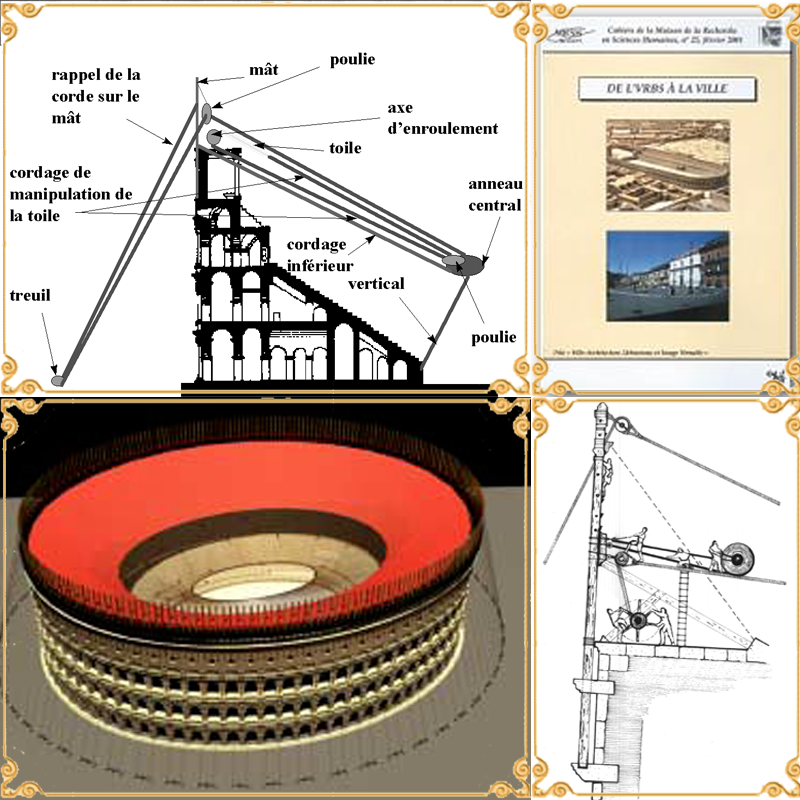
Статья: La mise en valeur du patrimoine culturel par les nouvelles technologies.
Авторы: Marie-Pierre Besnard et al.
Marie-Pierre Besnard. La mise en valeur du patrimoine culturel par les nouvelles technologies. Prepublications de l’Universite de Caen Basse-Normandie. Presses universitaires de Caen. 2008 [Электронный ресурс]. Систем. требования: Adobe Acrobat Reader. - URL: http://www.unicaen.fr/services/puc/ecrire/preprints/preprint0102008.pdf (дата обращения: 10.02.2011).
Index Terms — Virtual Historical Reconstruction, Cultural Heritage, Ancient Rome
Аннотация:
A la lumiere du double processus d’une marchandisation croissante de la culture et du passage au tout numerique qui bouleverse notre rapport au materiel et au sensible, il convient pour l’historiographe d’interroger la demarche de mise en valeur du patrimoine culturel par les nouvelles technologies. Presente sous sa premiere forme dans un memoire de Master 2, ce texte propose un etat des lieux sur la question.
In the light of the dual course of an evergrowing marketization of culture and the shift to an all digital world which upsets our very link to the what is material and tangible, the historiographer must question the process of enhancing the cultural heritage thanks to new technologies. First presented as “Master 2 recherche” resume, the following study presents a widespread insight to the subject.
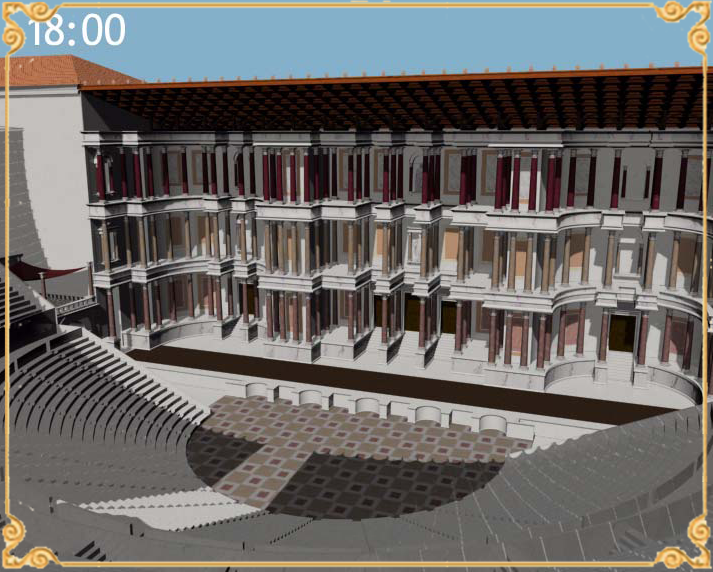
Сборник: L’Orgue de l’Antiquite a nos jours
Авторы: Hamel, J., Fleury, P., Hairie, A., Neveux, F.
Hamel, J., Fleury, P., Hairie, A., Neveux, F. L’Orgue de l’Antiquite a nos jours. Schedae Prepublications de l’Universite de Caen Basse-Normandie. Presses universitaires de Caen. 2005 [Электронный ресурс]. URL: http://www.unicaen.fr/services/puc/article.php3?id_article=641 (дата обращения: 10.02.2011).
Index Terms — Virtual Historical Reconstruction, Cultural Heritage, Ancient Rome
Аннотация:
Les recherches entreprises dans l’axe de recherche Savoirs et memoire interessent l’Antiquite greco-romaine et le Moyen Age et la Renaissance. Les travaux menes sont federes par une reflexion commune sur la typologie des savoirs (contenus, definitions, nature, transmission) et sur l’histoire litteraire des sciences et des techniques. Ils sont organises selon trois orientations : lexicologique, editoriale, et exegetique, que l’on retrouve dans l’espace de Schedae reserve aux prepublications de Savoirs et memoire.
Le fascicule L’orgue, de l’Antiquite a nos jours archive et diffuse le texte de quatre communications tenues au cours de la journee d’etudes du 5 decembre 2003. Cette rencontre a reuni autour du theme de l’orgue des historiens, des philologues, des physiciens, des facteurs d’orgue mais aussi des musiciens (qui peuvent du reste appartenir a l’une des categories pre-citees). Elle a associe a une exposition des conferences, des demonstrations et des auditions.
Depuis son invention au IIIe siecle avant J.C., l’orgue a subi une evolution permanente tout en gardant la meme structure fondamentale. Nous decrivons les principales etapes qui ont marque la facture d’orgues des origines a nos jours.
L’expression meme « orgue hydraulique » est interessante a etudier d’abord parce que l’histoire de chacun des mots qui la compose est curieuse, ensuite parce qu’elle a introduit une confusion difficile encore a dissiper aujourd’hui, faisant penser que l’orgue hydraulique est une machine differente de l’orgue tout court, alors quil n’en est rien : il y a continuite du principe de l’orgue, des origines jusqu’a aujourd’hui. Pour ce qui concerne l’orgue antique nous avons la chance de disposer de trois types de sources : textuelles, iconographiques et archeologiques. Cette riche documentation permet de proposer une reconstitution vraisemblable de l’orgue hydraulique romain tel qu’il est decrit par Vitruve. Les techniques de realite virtuelle aident a simuler et a expliquer le fonctionnement de l’appareil.
La specificite de l’orgue antique residait dans le controle du vent par des plaquettes metalliques percees de trous appelees plinthides, alors que l’orgue moderne utilise des soupapes. Nous avons tente la reconstitution des mecanismes anciens. Nos experimentations ont permis de verifier que l’orgue antique devait posseder les memes qualites de jeu que l’orgue moderne.
L’histoire de l’orgue medieval de la cathedrale de Bayeux est celle d’un instrument disparu. Nous disposons cependant d’une documentation assez importante a son sujet. L’element le plus spectaculaire est d’ordre architectural : il s’agit d’une tribune de pierre du XIIIe siecle, qui est conservee sur le cote gauche de la nef, ce qui est tout a fait exceptionnel. L’instrument qu’elle supportait est egalement atteste par un texte de la meme epoque. Il fut restaure et agrandi a plusieurs reprises, au XVe et au XVIe siecle. Il ne reste rien de cet instrument, car il fut detruit au cours des guerres de religion (1562-1563). En 1597, un nouvel orgue fut reconstruit au fond de la nef. Il est a l’origine de l’instrument actuel, qui fut completement refait par Aristide Cavaille-Coll en 1862.
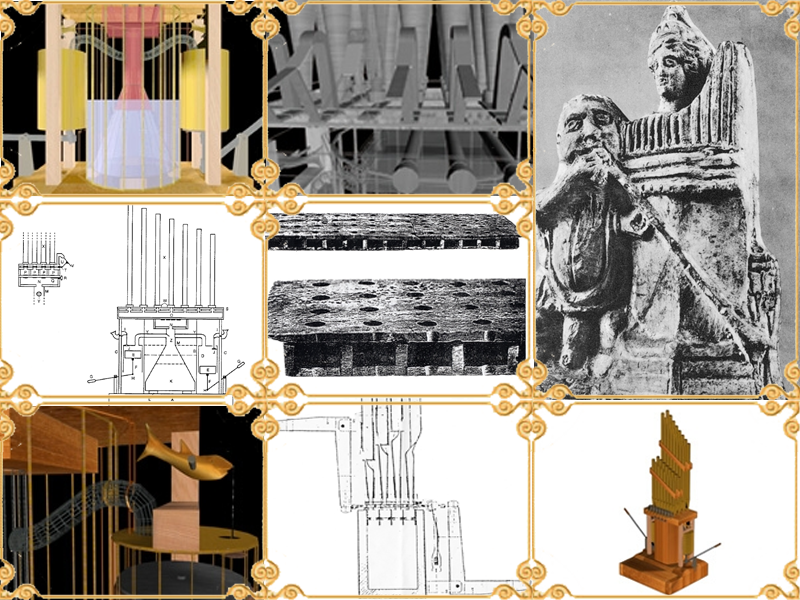
Посмотреть сборник
![]() Joseph HAMEL : Sciences et facture d’orgue
Joseph HAMEL : Sciences et facture d’orgue
![]() Philippe FLEURY : L’orgue hydraulique antique
Philippe FLEURY : L’orgue hydraulique antique
![]() Francois NEVEUX : L’Orgue medieval de la cathedrale de Bayeux (XIIe - XVIe siecle)
Francois NEVEUX : L’Orgue medieval de la cathedrale de Bayeux (XIIe - XVIe siecle)
Статья: Journee d’etude « Heritages et traditions encyclopediques dans l’Antiquite tardive »
Авторы: Fleury, P., Jacquemard, C., Van den Berg, C., Goldlust, B., Guillaumin Jean-Baptiste, Marquis, E., Madeleine, S., Kern, E., Reboul Jean-Pierre, Claude, E.
Fleury, P., Jacquemard, C., Van den Berg, C., Goldlust, B., Guillaumin Jean-Baptiste, Marquis, E., Madeleine, S., Kern, E., Reboul Jean-Pierre, Claude, E. Journee d’etude « Heritages et traditions encyclopediques dans l’Antiquite tardive » 2 Fevrier 2007, Universite de Caen Basse-Normandie, Maison de la Recherche en Sciences Humaines. Presses universitaires de Caen. 2007 [Электронный ресурс]. Систем. требования: Adobe Acrobat Reader. - URL: http://www.unicaen.fr/services/puc/article.php3?id_article=712 (дата обращения: 10.02.2011).
Index Terms — Virtual Historical Reconstruction, Cultural Heritage, Ancient Rome
Аннотация:
La reconstitution virtuelle de la Rome Antique avance vite, tres vite. En novembre 1993, ce n'etait encore qu'un concept, une idee que m'avait soumise G. Jean-Francois, Directeur du
L’Antiquite tardive constitue une periode cruciale pour la transmission des connaissances accumulees par les differentes civilisations antiques. Adoptant une demarche pluridisciplinaire fondee sur des approches litteraires, historiques, techniques et archeologiques, la journee « Heritages et traditions encyclopediques dans l’Antiquite tardive » a pour objet l’etude du savoir tardo-antique considere aussi bien comme heritage d’une longue tradition scientifique que comme reelaboration d’un ensemble de connaissances dans un cadre historique et culturel nouveau. Ce volume regroupe les communications presentees lors de cette journee.
A la lumiere d exemples tres precis, la communication explicite l’evolution de plusieurs schemas dialogiques, de Ciceron - pionnier latin du genre -, via le Dialogue des Orateurs de Tacite, jusqu’a Minucius Felix, dont l’Octauius constitue l’archetype du dialogue chretien.
Si la culture de l’Antiquite tardive est souvent qualifiee de culture seconde, largement fondee sur la pratique du commentaire, l’article d’Emmanuelle Jeunet-Mancy etudie, a partir de la dimension « eclectique » propre au commentaire grammatical, l’aspect encyclopedique de la reception de Virgile chez le grammairien Servius.
En rupture avec une approche des Saturnales de Macrobe en tant que pure compilation, sans coherence et uniquement exploitable dans une perspective antiquaire, Benjamin Goldlust montre que cette oeuvre didactique, caracterisee par une organicite toute neoplatonicienne, propose un programme encyclopedique a la fois ancre dans la tradition latine et innovant de par son orchestration litteraire.
Analysant le statut privilegie de l’oeuvre de Martianus Capella dans l’emergence du cycle des sept « arts liberaux » medievaux, Jean-Baptiste Guillaumin etudie la nouveaute radicale de cette conception du savoir dans un contexte fortement marque par le neoplatonisme.
Elargissant a la Seconde Sophistique le champ de nos investigations, Emeline Marquis souligne l’ambivalence du savoir philosophique tel qu il est presente par Lucien, entre corpus de connaissances acquises et enseignees, et pratique ethique du savoir.
Analysant d’un point de vue architectural et urbanistique la structure du complexe pompeien du Champ de Mars, Sophie Madeleine souligne les differentes reappropriations ideologiques qui ont marque l’evolution de cet ensemble architectural depuis sa construction jusqu a l’epoque tardo-antique.
Heritiere de l’epopee classique, la Johannide, epopee historique chretienne composee par Corippe en l’honneur du general Jean Troglita, temoigne d’une instrumentalisation politique du savoir en vue de l’emergence d’une memoire commune : tel est l’axe suivi par Etienne Kern dans sa communication.
A la faveur d’une etude detaillee des deplacements imperiaux dans l’Antiquite tardive et d’un commentaire archeologique des monuments cites dans l’Ordo urbium nobilium d’Ausone, Jean-Pierre Reboul discute l’interet historique de ce document.
L’etude de la transmission des textes astronomiques dans le domaine syriaque conduit Emilie Claude a mettre en lumiere les differents types de traductions et de commentaires qui ont assure la permanence indirecte de nombreux traites astronomiques antiques, et a s’interroger sur la datation de la traduction en syriaque de Ptolemee, de Theon d’Alexandrie et d’Eusebe de Cesaree.

![]() Emmanuelle Jeunet-Mancy : Le Commentaire de Servius a l’Eneide : eclectisme ou encyclopedisme?
Emmanuelle Jeunet-Mancy : Le Commentaire de Servius a l’Eneide : eclectisme ou encyclopedisme?
![]() Emeline Marquis : Le philosophe chez Lucien : savant ou charlatan?
Emeline Marquis : Le philosophe chez Lucien : savant ou charlatan?
Emilie Claude : La compilation des savoirs astronomiques grecs en syriaque entre le IVe et le VIe siecle (not avaliable online)
![]() СПИСОК ПУБЛИКАЦИЙ ПО ПРОЕКТУ PLAN DE ROME
СПИСОК ПУБЛИКАЦИЙ ПО ПРОЕКТУ PLAN DE ROME
